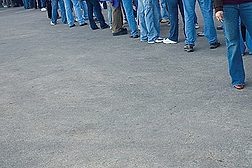Articles by Andy Hinz
Despite a cloudy economic picture, M&A activity continues to grind forward.
Read More
M&A Corner
Adhesives and Sealants M&A: Reaching Cruising Altitude
The level of merger and acquisition activity in 2021 has by almost any measure exceeded expectations.
December 17, 2021
M&A Corner
Looking Ahead: M&A Primed for Liftoff?
With COVID-19 vaccines starting to roll out and economic recovery underway, a palpable sense of optimism is beginning to emerge like the first rays of sunlight after a dark night.
December 23, 2020
M&A Corner
COVID-19: The Black Swan
Though the COVID-19 pandemic caused a major slowdown in merger and acquisition activity, strategic and "bolt-on" deals are still getting done.
October 7, 2020
Mergers and Acquisitions in Adhesives and Sealants: 2018 Review and Outlook
Activity is predicted to continue as conditions for mergers, acquisitions and divestitures remain favorable.
November 14, 2018
Mergers and Acquisitions in Adhesives and Sealants: 2015-2016 Review and Forecast
Recovering end markets are contributing to increased merger and acquisition activity in adhesives and sealants activity.
August 1, 2016
Labor and Productivity Trends
Future job growth in the adhesives and sealants industry is expected to align with end-market demand.
March 1, 2013
Keep the info flowing with our eNewsletters!
Get the latest industry updates tailored your way.
JOIN TODAY!Copyright ©2025. All Rights Reserved BNP Media.
Design, CMS, Hosting & Web Development :: ePublishing







